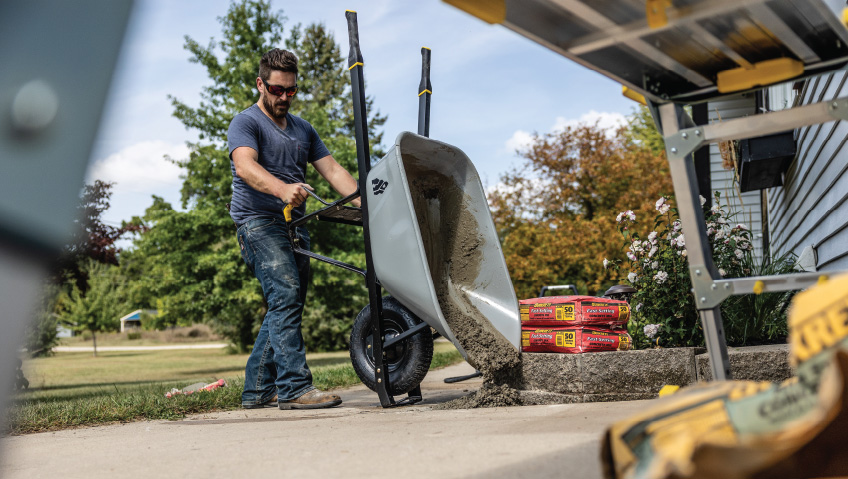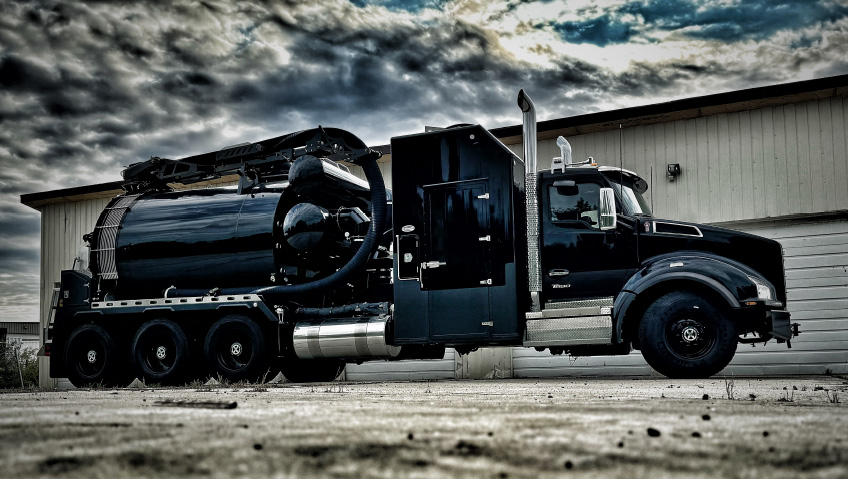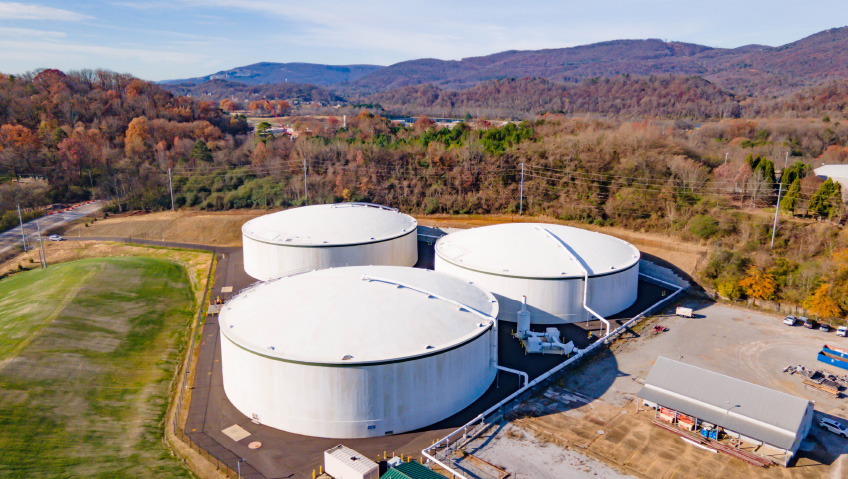With twenty-four years of experience, engineering consulting services firm RADISE International, a smart infrastructure company, is focused on improving the sustainability and resiliency of civil infrastructure projects. The company provides innovative solutions through its engineering consulting services and products to improve the way civil infrastructure is built and maintained.
Founder and CEO of RADISE International, L.C. (RADISE) and sister company Smart Structures, LLC (Smart Structures), Kumar A. Allady, is a civil engineer whose passion is to be an entrepreneur, innovator, and champion of smart infrastructure. While ‘smart’ can be used to describe many things, for Allady, the word has a particular meaning. Smart infrastructure has measurable resiliency and sustainability.
“For resiliency, the first thing that comes to mind is the picture of the great boxer Muhammad Ali. When growing up as a kid, I was taught that resiliency is when you can take a punch and then have the capacity to come back to normalcy.” Allady compares this notion to infrastructure. With the growing number of extreme global weather events such as Category 5 hurricanes, wildfires, and record-breaking rainfall, the challenge for engineers is to reopen infrastructure services following a disaster as soon and as safely as possible.
Resiliency is measured by how quickly services such as traffic lights, power, and bridges can return to normal operations after receiving a punch from Mother Nature in the form of an earthquake or storm. The firm Smart Structures builds technology that allows infrastructure to increase its resiliency and reopen faster. RADISE deploys these important technologies.
In addition to resilience, the second component of smart infrastructure is sustainability. Allady explained that sustainability has three legs: economics, environmental, and social. Demonstrated by the trillion-dollar infrastructure bill, the construction industry is one of the largest economic sectors in the U.S. The technology implemented by RADISE is capable of increasing the efficiency of the construction industry and its projects by reducing the uncertainties that often lead contractors to overbuild. More efficient construction as advocated for in the infrastructure bill allows for the development of additional projects, which results in more employment opportunities. This is another way to measure the economic benefit of sustainability in construction.
The second leg of sustainability is the environment. “In the U.S., we are the number one nation in terms of innovation, but when it comes to adoption of innovation, we are not number one, we are probably ranked somewhere in the twenties or thirties,” said Allady. He adds that environmental efforts are commonly geared toward specific industries and that minimizing the use of cement and steel material should not be overlooked, though this requires the adoption of new technology.
“The carbon footprint of cement and steel is sometimes 80 to 120 times bigger than that of oil and gas, so I think along with the oil and gas industry, we should also be looking at better ways to utilize cement and steel. I’m not saying we should ignore oil and gas but we should also address these other industries,” said Allady.
The third leg of sustainability is social and, similarly to the economics leg, the additional employment opportunities created through increasing the cost efficiency of projects would have a positive social impact. There is also a public safety impact on society. When RADISE helps to build better infrastructure with technology in place to monitor an asset’s condition as it ages, there is a warning before a disaster such as a collapse. All structures have a lifecycle and will eventually decline; the key to public safety is having the information in time to prepare.
The UN has reported that climate change is a “code red for humanity,” and building smart infrastructure is a necessary step in the right direction. As an engineering firm, RADISE is a solution provider, no matter the cause of the problem. Its technological expertise is in the effective deployment of sensors, often those created by companion company Smart Structures, to improve civil infrastructure. Smart Structures has created several quality product lines over ten years in business, and it continues to grow along with the philosophy of smart infrastructure in construction.
For various infrastructure construction projects, RADISE can provide corrosion sensors, vibration sensors, temperature sensors, and/or embedded data collectors. The company specializes in construction engineering testing, construction materials testing, geo-structural monitoring, quality management services, dynamic load testing, information technology, geographical information systems, and environmental consulting services.
“What we do is we combine different sensors for different infrastructure applications. The data we get from these sensors through data acquisition systems is pushed to the Cloud, and then on the Cloud we build all kinds of other apps to make digital assets a reality,” explained Allady. The sensors can be used in combination to improve the construction quality, operation, and maintenance of civil infrastructure, with limitless possibilities.
The take-up of innovative and sustainable products and methods can be more of a challenge than their actual invention. Most of the infrastructure projects across the country are developed by the government, and though people advocate for change at the policy level, it does not always translate directly to the world of construction.
“The adoption of innovation is a very tough subject because the big challenge is that construction is a sixteen-trillion-dollar industry, and the whole business model of the construction industry is volume-based. You get paid by the amount of material you use,” said Allady.
Clearly, it will not be easy to get contractors to adopt a technology that allows less material to be used, as this will result in lower pay with the current system. The entire volume-based business model of the construction industry must be altered to decrease waste of cement, concrete, and steel. This challenge of volume-based work also applies to engineers who are paid to do inspections, since their wage is based on the number of hours spent inspecting the site, and sensors reduce the need for inspections.
One of the main drivers for the more widespread use of embedded data collectors is likely to be the cost. The technology is very affordable, and many case studies have already proven that total project development costs actually decrease with the use of embedded data collectors, because sensors can be designed to identify waste in raw material usage in the early stages of construction. Moreover, total life cycle costs of the structure will always be lower with the use of this technology. Project owners are beginning to take notice.
The technology to improve efficiency already exists, and there is no time to be wasted. Eliminating the volume-based model benefits the government, the public, and the environment but, unfortunately, it will come with a lot of pushback due to disruptions to the usual process. With business models and procurement models based on inefficiencies, it is the forward-thinking contractors and engineering firms like RADISE that are making a stand for change in the construction industry.
If for some people, climate change is not enough motivation to make these necessary changes, hopefully preventing injuries and death from infrastructure collapse will have an impact. In June of this year, the Champlain Towers South, a twelve-story condominium partially collapsed in Surfside, Florida, and ninety-eight people died. The failure was primarily due to the long-term degradation of the concrete structural support at the ground-level parking garage as a result of water damage and steel corrosion. This type of disaster could be prevented in the future with the use of sensors developed by Smart Structures and deployed by RADISE to predict the degradation.
“There are always going to be failures of structures. The important question is: ‘Can we have advance warning so that we do not have a loss of life?’ and that is where we are creating solutions,” said Allady.
The Florida International University pedestrian bridge collapsed while under construction in March of 2018, causing six deaths and ten injuries. It is another example of where new technology in the construction industry could have saved lives.
“A lot of people are ready for incremental innovation but not for disruption. Disruption takes time to accept,” said Allady. This futuristic technology can immediately reduce the material required in a project and provide essential information about its lifecycle. However, the construction industry is dictated by the specifications and codes, many of which were written over forty years ago when the technology of today did not exist. The next step is to continue raising awareness to make massive changes in the construction industry.
“With the workforce, I see that a lot of the millennials are ready, savvy with tech, and I see there’s a shift that’s already happening. It is such a big industry, and I think it’s just a matter of time,” said Allady.
The United States is a hub for innovation, with the solution-oriented engineers and futuristic technologies needed to drastically improve how infrastructure is built, operated, and maintained. The focus now has to shift toward adjusting the construction industry’s business model and adopting the technology that is available to increase the sustainability and resiliency of civil infrastructure.
“The future is bright,” said Allady. “Solutions are coming from U.S. engineers to address global problems in the construction industry.”






